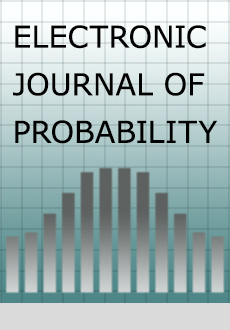Abstract
We consider the contact process with infection rate $\lambda $ on a random $(d+1)$-regular graph with $n$ vertices, $G_n$. We study the extinction time $\tau _{G_n}$ (that is, the random amount of time until the infection disappears) as $n$ is taken to infinity. We establish a phase transition depending on whether $\lambda $ is smaller or larger than $\lambda _1(\mathbb{T} ^d)$, the lower critical value for the contact process on the infinite, $(d+1)$-regular tree: if $\lambda < \lambda _1(\mathbb{T} ^d)$, $\tau _{G_n}$ grows logarithmically with $n$, while if $\lambda > \lambda _1(\mathbb{T} ^d)$, it grows exponentially with $n$. This result differs from the situation where, instead of $G_n$, the contact process is considered on the $d$-ary tree of finite height, since in this case, the transition is known to happen instead at the upper critical value for the contact process on $\mathbb{T} ^d$.
Citation
Jean-Christophe Mourrat. Daniel Valesin. "Phase transition of the contact process on random regular graphs." Electron. J. Probab. 21 1 - 17, 2016. https://doi.org/10.1214/16-EJP4476
Information





